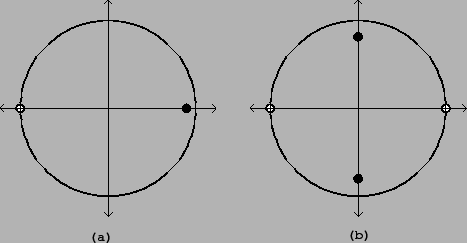In section 8.3.4 we saw a simple way to turn a low-pass filter into a band-pass one. It is tempting to apply the same method to turn our Butterworth low-pass filter into a higher-quality band-pass filter; but to try to preserve the higher quality of the Butterworth filter we have to be more careful in the design of the transformation we use. In this section we will prepare the way to making the Butterworth band-pass filter by introducing the idea of rational transformations of the complex plane which preserve the unit circle.
This discussion is adapted from [PB87], pp. 201-206 (I'm grateful to Julius Smith for this pointer). There the tansformation is carried out in continuous time, but here we have adapted the method to operate in discrete time, in order to make teh discussion self-contained.
The idea is to start with any filter with a transfer function as before:
Now suppose we can find a rational function, ![]() , which distorts the
unit circle in some desirable way. For
, which distorts the
unit circle in some desirable way. For ![]() to be a rational function means
that it can be written as a quotient of two polynomials (so, for example, the
transfer function
to be a rational function means
that it can be written as a quotient of two polynomials (so, for example, the
transfer function ![]() is a rational function). That
is a rational function). That ![]() sends points on the
unit circle to other points on the unit circle is just the condition that
sends points on the
unit circle to other points on the unit circle is just the condition that
![]() whenever
whenever ![]() . It can easily be checked that any function of
the form,
. It can easily be checked that any function of
the form,
Once we have a suitable rational function ![]() , we simply fabricate a new
rational function,
, we simply fabricate a new
rational function,
 |